Spay And Neuter Your Pets
We are all familiar with the discussion that happens so often with regards to owning an animal, and we see the television commercials and ads that always remind us that it is important to spay and neuter your pets, but there are far fewer people that actually understand why this is important.
Homeless Pets:
There are an estimated 10 million pets that will end up in shelters and pounds every year for a wide variety of reasons. Many of them are lost or have been abandoned, and some are homeless and were born on the streets. These animals are picked up by animal control or turned in to the shelters due to the fact that they are not able to be cared for in a loving home, however we must realize that they are being produced by animals that are generally members of a loving home. If a cat is left out at night and is not spayed or neutered, there is a good chance that this pet is seeking other cats to mate with, which produces more cats that do not have homes. If a dog manages to escape from a yard, as they often do when they are seeking a mate, they are attempting to produce more dogs. These animals will generally be born on the streets or potentially within the owner’s home, only to have the owner desperately seeking others to give the puppies or kittens to. When homes cannot be found they end up in shelters.
Healthy Pets:
In addition to the homelessness problem, many people are unaware that it has health benefits to your pet if they are spayed or neutered. Many types of cancers that are common in dogs and cancers can be reduced through spaying and neutering. Additionally, most injuries and losses occur when an animal escapes and roams. Their desire to escape and roam is generally increased when they want to mate or are in heat, which are both eliminated when the animal is fixed. If we reduce the animal’s urges to escape in order to find a mate, we significantly reduce their propensity to be hurt while they are outside the yard and loose on the streets.
Even though many people will delay spaying and neutering due to “feeling bad” or “taking away their manhood” it is important to understand that it is completely safe to spay and neuter your pet as young as 1 year old. The health benefits and reductions to the pet population are worth the effort it takes, and the feelings that you get about the procedure are not shared by your animal. They will not notice that they are spayed or neutered, nor will they be “changed” as a result of it. They will still be your loving pet who wants to take walks, spend time cuddling and enjoys your company. They will just be a little safer and healthier after the procedure. Do not delay and wait until something bad happens to spay and neuter your pets, make it part of their regular health care.

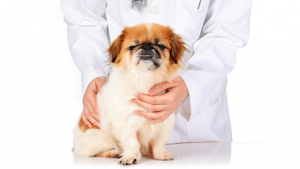 There are many animal hospitals in Las Vegas, and many fine veterinarians working within those facilities. We strongly encourage you to choose the best facility that you can afford, which is convenient to your home as well as being a caring and knowledgeable facility that has your pet’s best interests in mind. Convenience to your home is very important in that if it is not convenient there is a good chance that you will not take your pets in to see the vet for regular checkups as much as if it were closer, so we encourage you to find the clinic that is not only convenient but that makes you feel the most comfortable that your pet is in good hands. As long as you are willing to drive a few extra miles, sometimes the better choice maybe a little less convenient, but in the end, choosing the veterinarian that you will make the regular visits to is key. We are a different and new type of animal hospital in Las Vegas, in that our clinic was built on the philosophy of keeping your pet healthy, instead of just treating them when they are sick. We feel this makes us a better choice for your pet, even if it is a little less convenient for you.
There are many animal hospitals in Las Vegas, and many fine veterinarians working within those facilities. We strongly encourage you to choose the best facility that you can afford, which is convenient to your home as well as being a caring and knowledgeable facility that has your pet’s best interests in mind. Convenience to your home is very important in that if it is not convenient there is a good chance that you will not take your pets in to see the vet for regular checkups as much as if it were closer, so we encourage you to find the clinic that is not only convenient but that makes you feel the most comfortable that your pet is in good hands. As long as you are willing to drive a few extra miles, sometimes the better choice maybe a little less convenient, but in the end, choosing the veterinarian that you will make the regular visits to is key. We are a different and new type of animal hospital in Las Vegas, in that our clinic was built on the philosophy of keeping your pet healthy, instead of just treating them when they are sick. We feel this makes us a better choice for your pet, even if it is a little less convenient for you. Anyone who has lived in Las Vegas for more than a year realizes that the weather changes pretty dramatically and pretty quickly here, and with the first day of fall now officially over, we can expect the change to colder temperatures to be happening over the next few weeks. While this break from the heat of the Las Vegas summers is welcome for most residents, we must take into consideration how this change of weather affects our pets, and what we must do to keep them safe and healthy. In Las Vegas, it is never suggested to keep your pets outside for extended periods of time during any part of the year, but what we will observe many times is pet owners feeling that it is safe to keep their pets outside of the safety of their home for longer periods of time as the weather cools off. While the imminent threat of heat may not be as obvious as it once was a few months ago, it is important to remember that your pets are still exposed to the elements during the cooler months as well, and while we do not have much for snow in Las Vegas, we do get freezing temperatures that can be quite detrimental to your pet’s health.
Anyone who has lived in Las Vegas for more than a year realizes that the weather changes pretty dramatically and pretty quickly here, and with the first day of fall now officially over, we can expect the change to colder temperatures to be happening over the next few weeks. While this break from the heat of the Las Vegas summers is welcome for most residents, we must take into consideration how this change of weather affects our pets, and what we must do to keep them safe and healthy. In Las Vegas, it is never suggested to keep your pets outside for extended periods of time during any part of the year, but what we will observe many times is pet owners feeling that it is safe to keep their pets outside of the safety of their home for longer periods of time as the weather cools off. While the imminent threat of heat may not be as obvious as it once was a few months ago, it is important to remember that your pets are still exposed to the elements during the cooler months as well, and while we do not have much for snow in Las Vegas, we do get freezing temperatures that can be quite detrimental to your pet’s health.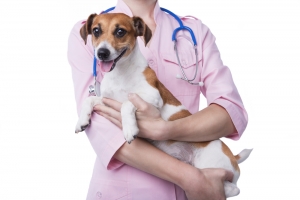 When a veterinarian examines your pet for a routine checkup, they are looking at your animal’s vital signs, possibly taking blood samples for testing against known potential health risks, looking for signs of disease or infection, and generally taking into account any changes that can be noticed since the last time they were seen. Weight loss and attitude changes in the pet are some of the telltale signs that something might be wrong, and at the visit, the veterinarian is looking for signals that there may be something wrong that can be treated. Many times, the pet itself will not give any physical signs of illness, and not yelp, or cry during their daily activities. This is due to the fact that animals will hide their illnesses or injuries through instinct, as in the wild an animal that is sick or injured is easy prey for predators. Your pet is a patient that is not willing to give many signs of illness, so it is the job of the veterinarian to use the knowledge of physical signals to diagnose illnesses or injuries even if you or I would not see them.
When a veterinarian examines your pet for a routine checkup, they are looking at your animal’s vital signs, possibly taking blood samples for testing against known potential health risks, looking for signs of disease or infection, and generally taking into account any changes that can be noticed since the last time they were seen. Weight loss and attitude changes in the pet are some of the telltale signs that something might be wrong, and at the visit, the veterinarian is looking for signals that there may be something wrong that can be treated. Many times, the pet itself will not give any physical signs of illness, and not yelp, or cry during their daily activities. This is due to the fact that animals will hide their illnesses or injuries through instinct, as in the wild an animal that is sick or injured is easy prey for predators. Your pet is a patient that is not willing to give many signs of illness, so it is the job of the veterinarian to use the knowledge of physical signals to diagnose illnesses or injuries even if you or I would not see them.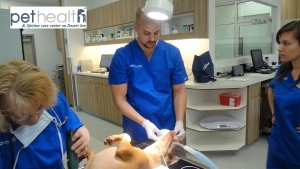
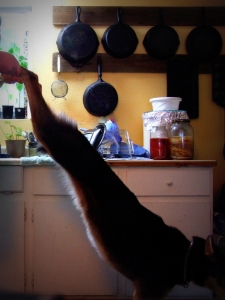 All dog owners who frequent areas where there are other dogs present will observe a dog fight or have their dog in a fight sooner or later. Even the most passive dogs will be attacked from time to time by other dogs, either while they are being walked or while they are loose in a dog park or another area. Additionally, your dog coming into contact with other dogs that are not leashed, are running loose, or are not friendly can pose serious threats to your dog, who might be completely innocent of instigating a fight but finds themselves being attacked and is attempting to defend themselves. No matter what the reason, a dogfight is a very traumatic and scary situation for human beings, as the chaos of the situation or the horrible vision of seeing your pet fighting will generally be very upsetting. In addition to the emotional trauma of seeing your pet in a fight, dogs that are engaged are in defense or attack mode, and will usually not be able to differentiate between their owners and the attacker. This means that when you try to break up a dogfight you may be bitten by the other dog, or potentially even be bitten by your own dog.
All dog owners who frequent areas where there are other dogs present will observe a dog fight or have their dog in a fight sooner or later. Even the most passive dogs will be attacked from time to time by other dogs, either while they are being walked or while they are loose in a dog park or another area. Additionally, your dog coming into contact with other dogs that are not leashed, are running loose, or are not friendly can pose serious threats to your dog, who might be completely innocent of instigating a fight but finds themselves being attacked and is attempting to defend themselves. No matter what the reason, a dogfight is a very traumatic and scary situation for human beings, as the chaos of the situation or the horrible vision of seeing your pet fighting will generally be very upsetting. In addition to the emotional trauma of seeing your pet in a fight, dogs that are engaged are in defense or attack mode, and will usually not be able to differentiate between their owners and the attacker. This means that when you try to break up a dogfight you may be bitten by the other dog, or potentially even be bitten by your own dog.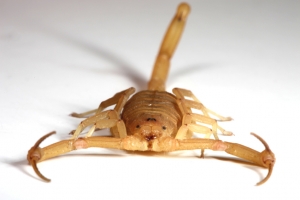 Living in Las Vegas, we have a great number of insects that are only found in desert climates, and unfortunately, many of these insects have bites and stings that can be quite painful, if not deadly to pets and humans alike. Without going into a list of insects that are common to the Las Vegas valley that will frequently sting or bite pets who interrupt them, we will discuss a few of the most common. As an expansion to areas of Las Vegas that have remained as an un-inhabited desert for many years happens, we find many insect populations coming into close contact with us every day, even though many people can claim to have never even seen one of these types of insects previous to moving to a specific area of Las Vegas. We will be discussing scorpion stings, and what to do if your pet is stung by a scorpion.
Living in Las Vegas, we have a great number of insects that are only found in desert climates, and unfortunately, many of these insects have bites and stings that can be quite painful, if not deadly to pets and humans alike. Without going into a list of insects that are common to the Las Vegas valley that will frequently sting or bite pets who interrupt them, we will discuss a few of the most common. As an expansion to areas of Las Vegas that have remained as an un-inhabited desert for many years happens, we find many insect populations coming into close contact with us every day, even though many people can claim to have never even seen one of these types of insects previous to moving to a specific area of Las Vegas. We will be discussing scorpion stings, and what to do if your pet is stung by a scorpion.



 months of ownership. This means that no matter where you adopt your pet from (as long as it is a licensed rescue or shelter) we will provide you with a really great start by making your medical responsibilities as inexpensive as possible. We even go as far as to pay for your first month pet insurance, so if a medical issue arises you will not have to consider taking that animal back to the rescue because you cannot afford it. Our goal is to get as many animals rescued as possible in Las Vegas, and reduce the unbelievably large numbers of animals sitting in cages at shelters. It is our way of giving back to the Las Vegas animal community, so if you adopted a pug from Southern Nevada Pug Rescue or you adopted a pit bull from The Animal Foundation, we have you covered. Come in and get your gifts.
months of ownership. This means that no matter where you adopt your pet from (as long as it is a licensed rescue or shelter) we will provide you with a really great start by making your medical responsibilities as inexpensive as possible. We even go as far as to pay for your first month pet insurance, so if a medical issue arises you will not have to consider taking that animal back to the rescue because you cannot afford it. Our goal is to get as many animals rescued as possible in Las Vegas, and reduce the unbelievably large numbers of animals sitting in cages at shelters. It is our way of giving back to the Las Vegas animal community, so if you adopted a pug from Southern Nevada Pug Rescue or you adopted a pit bull from The Animal Foundation, we have you covered. Come in and get your gifts.